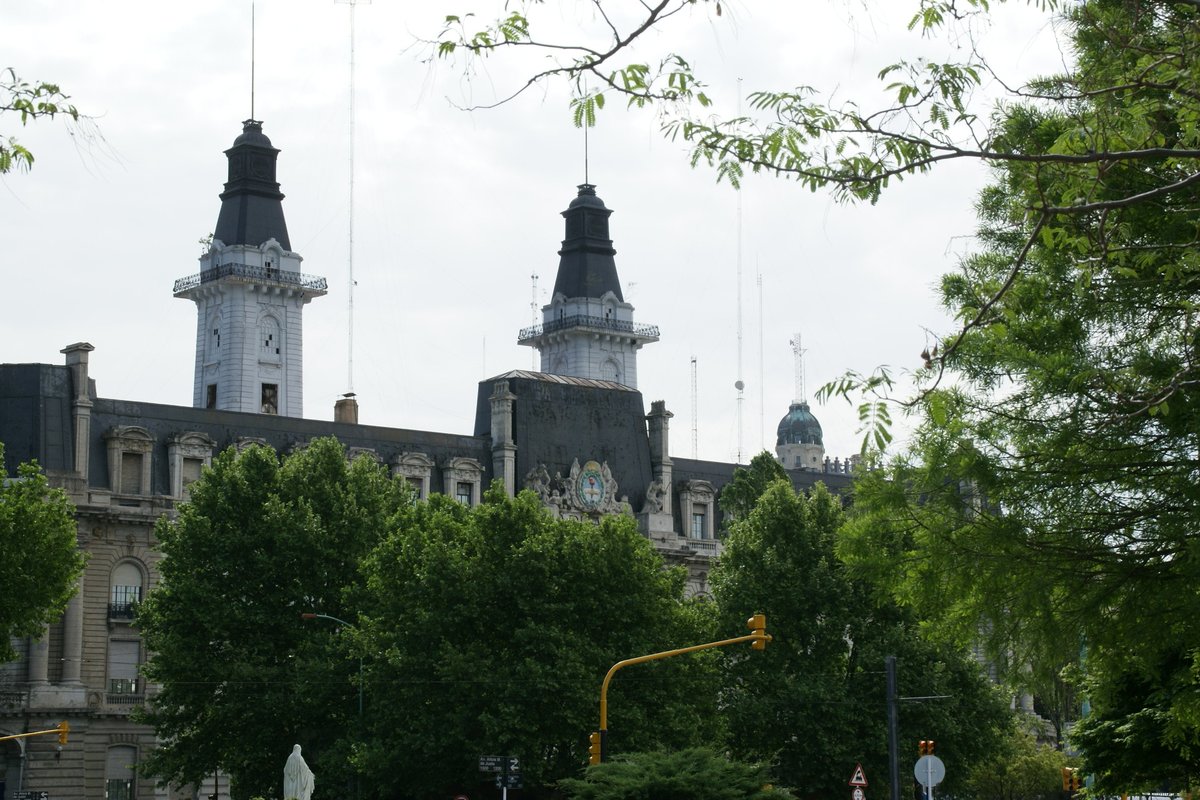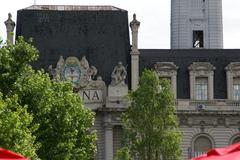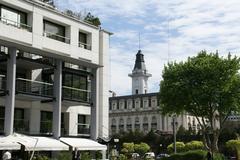
Buenos Aires Customs: Visiting Hours, Tickets, and Historical Significance Guide
Date: 14/06/2025
Introduction to Buenos Aires Customs
The Buenos Aires Customs House (Aduana de Buenos Aires) stands as a monumental testament to Argentina’s economic power, architectural grandeur, and cultural heritage. Rooted in the city’s colonial origins, customs institutions have been pivotal in shaping Buenos Aires as a major port and economic hub in South America. Today, the Customs House and its historic offshoots—such as the Museo de la Casa Rosada—offer visitors a window into the evolution of Argentine trade, urban development, and national identity (Britannica; Elsevier).
This guide details the history, architectural highlights, visiting hours, ticket policies, accessibility, and travel tips for exploring Buenos Aires Customs and its associated museums and sites. Whether you’re a history enthusiast, architecture aficionado, or a traveler seeking cultural immersion, this resource will help you plan a rewarding visit to one of Buenos Aires’ most significant landmarks.
Table of Contents
- Colonial Origins and Early Development
- Customs House: Economic and Political Power
- Customs Legislation and Urban Transformation
- Visiting Buenos Aires Customs: Hours, Tickets, and Accessibility
- Modern Role and Cultural Legacy
- Buenos Aires Customs House: Architecture, Tours, and Photography
- Museo de la Casa Rosada: Exhibits and Visitor Information
- Visitor Tips and FAQs
- Practical Information and Local Customs
- Special Events and Seasonal Advice
- Summary and Recommendations
- References and Further Reading
Colonial Origins and Early Development
Founded in 1536 and re-established in 1580, Buenos Aires quickly emerged as a strategic port on the Río de la Plata. The customs institution, established during the colonial era, managed the flow of goods and enforced trade regulations—even in the face of Spanish-imposed restrictions that often led to widespread smuggling (Britannica). By the late 18th century, after Buenos Aires became capital of the Viceroyalty of the Río de la Plata, the customs house solidified its role as a key revenue generator and a focal point in national and international commerce.
Customs House: Economic and Political Power
Throughout the 19th century, Buenos Aires Customs became the single largest source of revenue for both city and nation, with customs duties accounting for over 80% of fiscal income by the 1870s (Elsevier). Control over these revenues fueled political tensions, particularly between Buenos Aires and the provinces, and shaped national debates on federalism and economic policy.
Customs Legislation and Urban Transformation
The 1854 Customs Law introduced a tiered tariff system, balancing fiscal needs with protectionism for local industries (Elsevier). These revenues financed the modernization of Buenos Aires, contributing to the construction of grand avenues, parks, and monumental buildings, including the Customs House itself—a symbol of the city’s ambition to emulate European capitals (Introducing Buenos Aires).
Visiting Buenos Aires Customs: Hours, Tickets, and Accessibility
Casa Rosada Museum (Museo de la Casa Rosada)
- Hours: Wednesday to Sunday, 10:00 AM – 6:00 PM
- Admission: Free; guided tours available (advance booking recommended)
- Location: Behind Casa Rosada, at Paseo Colón and Hipólito Yrigoyen, Monserrat
- Accessibility: Wheelchair accessible; accessible by Subte (metro), bus, taxi (Wikipedia)
Buenos Aires Customs House (Palacio de la Aduana)
- Exterior Viewing: Open 24/7 from Azopardo 350 and adjacent streets
- Interior Access: Limited; available only during special events or guided tours (Buenos Aires Tourism)
- Museo de la Aduana: Monday to Friday, 10:00 AM – 5:00 PM; free admission
- Night Tours: Monthly, free, require advance registration ([email protected]) (Baires Secreta)
General Accessibility
Both the Customs House and Casa Rosada Museum are centrally located, accessible via public transport, and situated in pedestrian-friendly neighborhoods. Some historic areas may have limited accessibility—contact venues in advance for specific needs.
Modern Role and Cultural Legacy
Buenos Aires remains Argentina’s principal customs gateway, managing the majority of the nation’s imports and exports. The customs authority, under AFIP-ARCA, plays a key role in trade facilitation and digital modernization (Argentina.gob.ar). The customs heritage is deeply woven into Buenos Aires’ cultural identity, reflecting the city’s history as a port of entry for goods and immigrants (Hey Explorer).
Buenos Aires Customs House: Architecture, Tours, and Photography
Architectural Highlights
- Design: Inaugurated in 1910, designed by Eduardo Lanús and Pablo Hary in French academic style
- Features: Grand symmetry, twin towers, Beaux-Arts facades, arched windows, and ornate ironwork
- Landmark Status: Declared a National Historic Landmark in 2009 (Wikipedia)
Tours and Photography
- Guided Tours: Offer access to restricted areas and focus on architectural and historical insights; primarily in Spanish, with some English options on request
- Best Photo Spots: Facade from Azopardo Street, towers from Puerto Madero, and illuminated views at night
Museum Exhibits
The Museo de la Aduana showcases customs history through artifacts, documents, uniforms, and scale models, including references to the former Aduana Taylor building (Historia de la Aduana).
Museo de la Casa Rosada: Exhibits and Visitor Information
Museum Overview
- Exhibitions: Archaeological remains of the Aduana Taylor, presidential artifacts, the Ejercicio Plástico mural, and a chronological audiovisual timeline
- Facilities: Glass-roofed galleries, café, gift shop, and event spaces
- Admission: Free (verify in advance for special events or exhibitions)
- Visitor Services: Guided tours in Spanish (English available on request), ramps and elevators for accessibility
Location and Transport
Centrally located behind Casa Rosada and near Plaza de Mayo, the museum is easily accessible by Subte, bus, and taxi (Wikipedia).
Visitor Tips and FAQs
Are tickets required?
Admission is generally free at both the Casa Rosada Museum and Museo de la Aduana. Night tours require advance registration.
Best times to visit?
Weekdays and mornings are less crowded. Check for special events or closures before visiting.
Is photography allowed?
Permitted in most public areas; avoid flash or tripods near sensitive exhibits.
Are English tours available?
Primarily in Spanish, but English guides may be arranged with advance notice.
Is the area safe?
Montserrat and Puerto Madero are generally safe, but standard urban precautions apply (Nannybag).
Nearby attractions?
Combine your visit with Plaza de Mayo, Casa Rosada, San Telmo, and Puerto Madero.
Practical Information and Local Customs
- Address: 1000 Azopardo Street (Customs House), Paseo Colón and Hipólito Yrigoyen (Casa Rosada Museum)
- Dress Code: Smart-casual recommended, especially for night tours
- Tipping: Not customary for free tours; a thank you is appreciated (LandingPadBA)
- Language: Basic Spanish is helpful; some staff speak English
- Public Transport: Subte Lines C and E (Belgrano, Independencia), multiple bus routes
Special Events and Seasonal Advice
- The Customs House and surrounding area host special events during national holidays and anniversaries (e.g., May Revolution, May 25).
- Buenos Aires enjoys a temperate climate—summers are hot and humid, winters are mild; dress accordingly.
Summary and Recommendations
Buenos Aires Customs is a gateway to understanding Argentina’s historic role in trade, politics, and urban transformation. From the grand Palacio de la Aduana to the evocative exhibits of the Casa Rosada Museum, these sites offer deep insights into the city’s mercantile and architectural legacy (Architectural Digest; El Insignia). Plan your visit to include guided tours, explore nearby attractions, and utilize resources like the Audiala app for up-to-date information and interactive experiences.
Stay informed about visiting hours and special events via official tourism websites and social media. Exploring Buenos Aires Customs will enrich your appreciation of the city’s vibrant past and dynamic present.
References and Further Reading
- Buenos Aires Customs: Visiting Hours, Tickets & Historical Sites Guide, 2025, Various Authors (Britannica)
- La disputa por la Nación y las rentas aduaneras en Argentina, 2013, Elsevier (Elsevier)
- Buenos Aires Customs House: Visiting Hours, Tickets, and Historical Significance, 2025, Various Authors (Architectural Digest)
- Museo de la Casa Rosada and Aduana Taylor Building Information, 2025, Wikipedia (Wikipedia)
- Visiting the Buenos Aires Customs House: Hours, Tickets, and Historic Insights, 2025, Baires Secreta (Baires Secreta)
- Buenos Aires Tourism Official Website, 2025 (Buenos Aires Tourism)
- Argentina Customs Official Portal, 2025 (Argentina.gob.ar)
- Expat Pathways on Government Buildings, 2025 (Expat Pathways)
- Mfat Market Reports: Argentina Trade, 2025 (Mfat.govt.nz)
- El Insignia: Buenos Aires Customs, 2016 (El Insignia)































































































































































